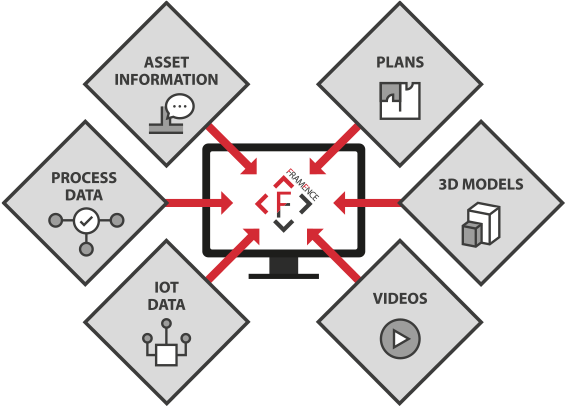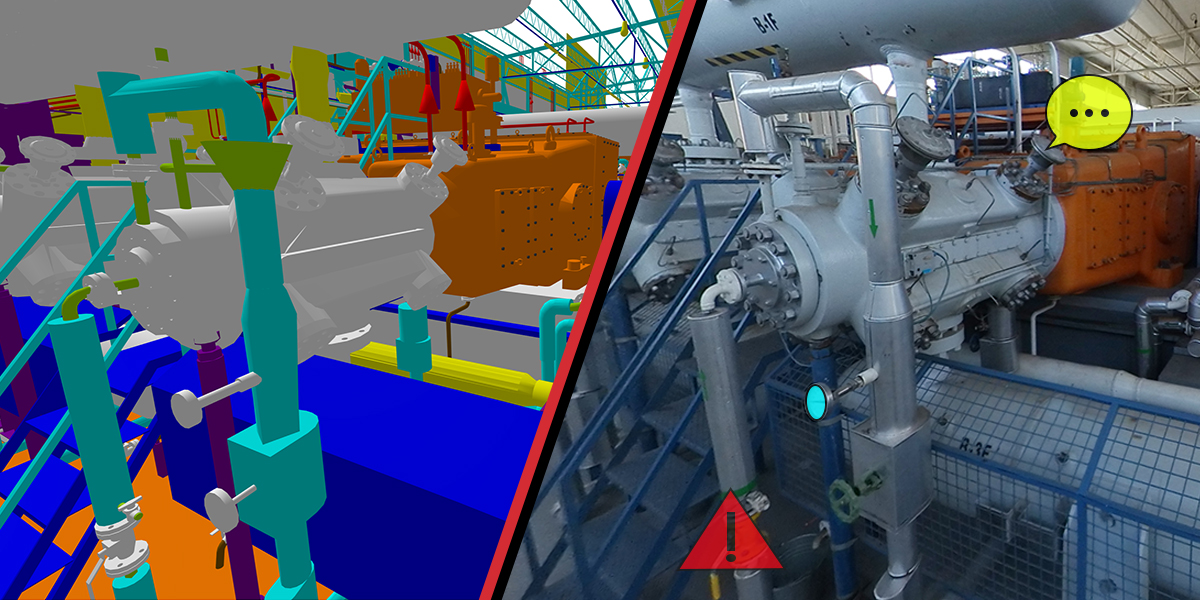Nowadays there are many players in the market that can create accurate 3D models of the real world structures – a process that is commonly called “reality capture”. Using laser scanners or photogrammetry, detailed three-dimensional, geometric representations of captured objects are created. The results of this is referred to as a “digital twin”.
But such a three-dimensional model is by no means a digital twin. The models certainly represent what is physically present and all the associated visible information. Though any building or technical installation has a large amount of information and data that is not visible. These invisible information are for example asset information stored in an ERP system, process data used by the CAFM as well as consumption and meter data from the building management system. Also the energy management system or some other control system, as well as the multitude of senors in modern “smart” buildings or factories yield additional information.
This is why we at FRAMENCE have expanded our photorealistic models into a comprehensive hybrid model. In this hybrid model, geometry is of course an important component but only just one. Thanks to our interfaces and API, as well as the extensive expertise of our partners speedikon and WiriTec, we are able to connect any third-party system. Using the very powerful possibilities of Points-of-Information (PoI) and Points-of-Sensor (PoS), we can make this vital data available in FRAMENCE.
These information points can be located very quickly by the user with a couple of clicks. Additionally, and thanks to image recognition algorithms, they can also be placed fully automatically. Once precisely located, they form the visual interface to the third-party systems concerned. The user can later simply click on the PoI and get all the information needed about the asset in question, either directly in FRAMENCE or in the external system. Existing dashboards, documents, reports, charts, or even videos can also be embedded directly in FRAMENCE. However, in order to avoid undesired data duplication, the data from the external systems are not stored in FRAMENCE, but only passed through and made available during runtime. This ensures that the specialist systems from which the data originate always maintain data ownership.
Only when the 3D geometry is combined with all the additional information in a seamlessly integrated, easy to use and understand photorealistic model, we have a real “digital twin.“









